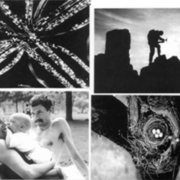Presentation, Practicing mediations in therapeutic groups
The primary role of the image in the life of the mind is evident in an experience that we all have of ourselves, of our own selves. It is one that is presented, to put it evocatively, like a kind of interior “film,” one that excites us, involves us, makes us rejoice and suffer and, through this, allows us to be living witnesses to the continuity of our existence. Psychoanalytic research, from its inception, has witnessed and investigated the role and importance of the image in the life of the mind, a “path” that began with Freud and has been trodden by many of his greatest followers, and one that still seems rich and fertile. Perhaps it is because, among the countless other reasons, “images,” as Gribinski sustains, “have an acute intelligence of the world, of our separate relationship with the world,” and at the same time they have the magical power to render incomplete separations “happily imperfect.” Like a bridge that anchors us to the ground, images anchor us to the background Read more

